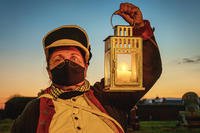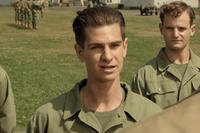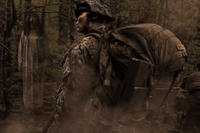It was 2007 and Navy doctor Lt. Bryan Alvarez was treating five Iraqi soldiers injured when an IED blew up the vehicle they were driving. Deep in the desert of western Anbar province of Iraq, Lieutenant Alvarez had set up a Marine Corps battalion aid station in an old abandoned train station. He was assisted by three Navy corpsmen. They had simple combat medical kits consisting of intravenous fluid bags, morphine, tourniquets, and emergency blood clotting packs. He and his team proceeded to treat one man with burns to his face, one with a collapsed lung, one with a broken femur, and two others with extremity injuries. At one point, he looked around at the hot, dusty, dirty, and desolate environment, wiped his brow and thought to himself, "Wow. This is a little like what those doctors at Antietam must have faced."
The Battle of Antietam, fought on this day, Sept. 17, in 1862, was the bloodiest battle in military history, with a one-day total of more than 22,000 dead, wounded, or missing. Fought near Sharpsburg in western Maryland, it pitted Confederate General Robert E. Lee's Army of Northern Virginia against Union General George B. McClellan's Army of the Potomac. McClellan halted Lee's invasion of Maryland, giving the Union a strategic victory. But the human cost was colossal.
Tasked that day with saving as many lives as possible was a man doctor named Maj. Jonathan Letterman. He was already a veteran of combat care who had treated wounded soldiers during the Seven Days Battle in June 1862 in Richmond, Virginia, where more than 35,000 men had died, were wounded or missing. He collected some valuable lessons during that multi-day battle that he put to work three months later at Antietam. In so doing, he fundamentally changed the way the military treated field casualties and he established the foundation for modern military medicine.
Military doctors, nurses, and hospital corpsmen find themselves in a dual role: beholden to both the Hippocratic Oath and the oath to serve their nation as uniformed military professionals. And nowhere is that dual obligation more honed than at the armed service's medical school, called the Uniformed Services University for the Health Sciences in Bethesda, Maryland.
During their first year of medical school, USU students are taken on a field trip to the Antietam National Battlefield. There they can see firsthand where this bloodiest of battles took place. Now a Navy commander, Alvarez vividly remembers walking the fields and seeing the infamous "Bloody Lane," a sunken road where Confederate soldiers were caught in a deadly trap by Union soldiers perched on a grassy knoll above them. By 1:00 p.m. that day, 5,600 casualties lay in that ditch. The challenge to collect and treat these wounded was unprecedented.
Army doctor Maj. Brit Geisler participated in the USU Antietam March more than fifteen years ago, but it left an indelible impression. "I remember walking through the fields and noticing the tactical issues with the battlefield. I remember having a person that had a horse-drawn cart that was considered the 'ambulance' and then showing the tools for the trade of military medicine. The saws that did battlefield amputations. It was how we started. The history of military medicine. It made an impact on knowing how far we have come but how we are still challenged with the same problems. The wars in Iraq and Afghanistan saw a lot of extremity injuries because of the advancement of body armor that included a lot of amputations. That was always a theme during our time in USU."
In addition to the Antietam March, USU students also undergo extensive field and operational training, including a mock deployment to a combat zone. They receive hands-on experience on how to do "good medicine in bad places." Learning early in their careers the challenges they will face gives them a distinct advantage.
"Having both the knowledge of the history during Antietam and knowing the current conflict, I was well prepared for the injuries that presented during deployment," Major Geisler asserts. In Afghanistan, "I was able to plan how I was going to use my training as a gynecologic surgeon to address the battlefield injuries."
George Wunderlich, the former executive director of the National Museum of Civil War Medicine, says that the biggest takeaway for the USU students who participate in the annual Antietam March is that "you are going to face the same human circumstances on every battlefield and every natural disaster in every age, whether it is a thousand years ago, or 150 years ago or ten minutes from now and to understand you are solving the same problems and you are facing the same circumstances gives you a basis upon which to do better than your predecessors."
When the military deploys to those "bad places" around the world in defense of our nation and its strategic objectives, these warfighters need to be confident in the combat medicine skills that the doctors, nurses, and medics behind them have. The care the USU-trained medical professionals provide is on the forefront of medicine, especially trauma medicine. As Major Geisler points out: "Mass casualties were second nature to me since we trained on it so much." The chaff surrounding the most recent proposed budget cuts to military medicine and USU seems to overlook that important differentiator.
Taylor Baldwin Kiland is the coauthor of Lessons from the Hanoi Hilton: Six Characteristics of High-Performance Teams.
-- The opinions expressed in this op-ed are those of the author and do not necessarily reflect the views of Military.com. If you would like to submit your own commentary, please send your article to opinions@military.com for consideration.














